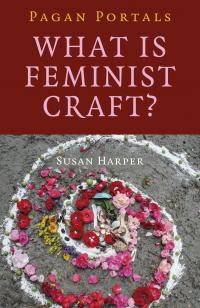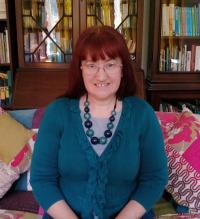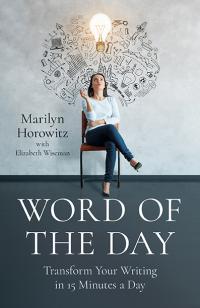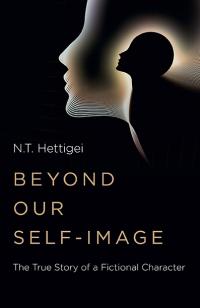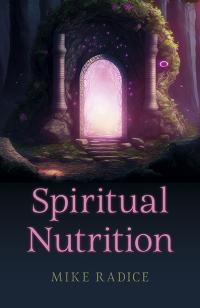
Feminist Craft - Susan Harper
Chapter 2: The Goddess
In the title of her foundational text on Wicca, The Spiral Dance, Starhawk called Witchcraft “the religion of the Great Goddess.” Contemporary Pagan Witchcraft, of which Wicca is probably the most well known branch, is often called “Goddess religion” or “the religion of the Goddess” as well. Claims of ancient links between Witchcraft and Goddess worship throughout Prehistoric Western Europe are shaky at best and specious at worst, but Contemporary Paganism and Witchcraft have been undeniably Goddess-centered since their emergence in the 19th and 20th centuries. When one first encounters most iterations of Contemporary Paganism, the Goddess (whether she is accompanied by a God or not) is often the most striking feature.
Feminist Witchcraft is at its heart Goddess-centered, though what that means can vary depending on the Witch in question. The centrality of the Goddess (sometimes simply referred to as “Goddess” without the definite article), most often to the exclusion of any God or Masculine Divine, is perhaps the defining feature that differentiates Feminist Witchcraft from Wicca or other forms of Contemporary Witchcraft. The political reasons for a primary or sole focus on the Goddess in Feminist Witchcraft will be discussed in a bit more depth later, but for now, we’ll take a closer look at the question of who the Goddess is.
Who Is The Goddess?
It’s something of an axiom that if you bring 12 Witches together and ask them who the Goddess is, you’ll get 13 different answers. Some will respond by discussing specific, distinct Goddesses from a given pantheon or pantheons. Others will speak about a universal Divine Feminine force that is understood through the images of different Goddesses in different places and times, who are all aspects of that One Feminine Divine. Still others might evoke a framework familiar to Wiccans, where The Goddess is one half of a duality completed by The God. Others might speak of archetypes, or symbolic personification of the Universal Life Force. And still others may speak of the Goddess as the embodiment of the Feminine Principle in the Universe.
And they’re all right. Because of its roots in the Women’s Spirituality movement, and because a central tenet of that movement was the reclamation of a Feminine Face of God,[1] Feminist Witchcraft is by its nature Goddess-centered. (Patricia Hopkins and Sherry Ruth Anderson, The Feminine Face of God: The Unfolding of the Sacred in Women (Bantam, 1992)) The thealogy[2] that underpins Feminist Witchcraft it is not prescriptive, but is instead personal, political, and experiential. While Goddess thealogians like Carol P. Christ and Rosemary Reuther (among many others) have written extensively on Goddess-based frameworks and worldviews, none of these are taken as canon or (forgiving the pun) gospel truth. Rather, they are presented as potential models for understanding a Goddess worldview, especially for those who want to move beyond Abrahamic frameworks and the patriarchal social institutions underpinned by them. In order to imagine a new way of relating to ourselves and the planet Herself, these writers argued, we must relate to Divinity differently. For some Feminist Witches, like myself, this means that the Masculine Divine as symbolized by a male God is not part of their practice. Most of the early writers on Feminist Witchcraft craft rituals around the Goddess alone, rather than the more familiar God-Goddess dyad found in much of Wicca. Some Feminist Craft traditions do recognize a God or male deity but tend to place him somewhat lower in status than the Goddess herself. Personally I find that that does little but recreate the same sexist dynamic which erased and debased Goddess, and I choose not to work with Divinity in this way.
So, do you need to “believe” in the Goddess in order to practice Feminist Craft? Well, no. To paraphrase Starhawk, Witches don’t believe in the Goddess -- we experience Her. But in a broader sense, there is no need to believe in a Divinity or Higher Power if you want to practice Feminist Craft. The engagement with power, and particularly the power of Nature, is to me more fundamental than any belief in a discreet or universal Goddess, and I believe that power can be found within ourselves and within circles of other practitioners. I have practiced alongside many atheist and humanist Feminist Witches who found their power not in the idea of a Goddess but instead through observing Nature itself and finding awe and sacredness there, and in finding the sacred and the powerful in themselves and other humans.
Belief in the Goddess or any sort of Divine is not required to practice Feminist Witchcraft, and I would argue that even those of us who do assert the existence of the Goddess in one form or another do not “believe” in her in the sense that “belief in God” is so often used in Western culture. Rather, I contend that we experience Goddess through interactions with Nature, through participating in ritual, through coming to know and value ourselves. If, as Starhawk has said, witches are people who are paying attention, then we come to know the Goddess through paying attention to the everyday moments of sacredness that permeate our lives. In fact, the ability -- even the necessity -- of humans to directly experience Divinity and to find the Divine in ourselves is a direct outgrowth of the politics that underlie the emergence of Feminist Witchcraft in the first place.
Ultimately, however, the way any individual practitioner of Feminist Craft understand the Goddess is intensely personal, and it may be fluid and shift over time. (My own personal thealogy has shifted from a monist “Universal Life Force with many manifestations” to a more humanist perspective over my nearly three decades of practice.) While some may find this fluidity and squishiness frustrating, others (including myself) find freedom in getting to determine what relationship, if any, we engage in with Divinity.
A Quick Primer on Feminist Theology
One of the driving forces behind the Women’s Spirituality movement that gave rise to Feminist Witchcraft as I practice it was the desire to reclaim the Feminine Divine. The Second Wave Feminism of the 1970s was deeply critical of the patriarchal nature of Western religion, and of Christiantiy in particular, and saw the exclusive focus on the Masculine Divine as underpinning much gender inequality in the West. Feminist theologian Mary Daly[3] infamously intoned, “When God is male, the male is God,” in her 1973 speech “Beyond God the Father,” and other early writers in the Women’s Spirituality and Goddess movement also pointed to the lack of Feminine Divine in Abrahamic faiths as oppressive to women. While not all the writers in the Women’s Spirituality movement advocated placing a Goddess or Feminine Divine at the center of religion as a way to address these problems, a number of them did. Carol P. Christ’s 1978 essay “Why Women Need the Goddess” articulated the ways in which the loss of access to the Feminine Divine harmed women and created a culture in which women are systematically devalued. This essay, first delivered as a keynote speech, effectively kicked off the modern Goddess movement in the US, which in turns underlies much of Feminist Witchcraft as it is practiced today. Christ’s central argument, and one that is common throughout much of early Feminist Spirituality and Feminist Witchcraft writing, is that by making God solely male in Western thought, society has deprived women of the ability to see themselves as divine and sacred -- and has by extension allowed for the denigration of women on a societal level. Reclaiming the Goddess/Feminine Divine allows women to reclaim their own sacredness, which is key to addressing gender-based oppression and the social and personal ills that flow from it.
Why Center the Goddess?
So why center the Goddess? Doesn’t that just replicate the same erasure that Feminist Witches are critiquing, but with the genders flipped? Don’t we need both Goddess and God to have a balanced view of Divinity?
Certainly, some Witches do feel that it’s necessary to work with both a God and a Goddess in order to balance what they term masculine and feminine energies. Within Feminist Craft as I practice it, however, is the idea that we can balance these seemingly polar energies without conflating them with human ideas of gender. Although I recognize the importance and the historical use of the terms “masculine” and “feminine” to denote two different types of energies we can work with in spiritual practice, I increasingly have engaged in feminist critique of these terminologies as bioessentialist and reductive, and ultimately harmful to humans of all genders (of which there are more than two). I find myself drawn to the terms “projective” and “magnetic” (borrowed from my good friend, queer astrologist Colin Bedell) rather than the customary gendered binary.
Centering the Goddess is also important in Feminist Craft because by centering Her, we also center the human women who are Her embodiment on Earth.[4] The earliest writers in the Goddess Movement drew a direct line from the treatment of the Earth herself to the treatment of human women, and made explicit that centering the Earth (as embodied in the Goddess) and demanding that environmental exploitation be addressed and stopped was part and parcel of the liberation of women and the ending of gender-based violence -- two of feminism’s central goals. By seeing the parallels between the degradation of the Earth and the degradation and exploitation of human women, these thealogians created a system in which the Goddess was not just reclaimed in the context of white, masculine, heteropatriarchy (or what Rosemary Radford termed Kyriarchy, a specific kind of patriarchy where only certain men and the people adjacent to them hold power and reap society’s benefits), but called for the fundamental rethinking of the ways in which society is organized.
Some of the earliest writers on Goddess spirituality and Feminist Witchcraft felt that centering the Goddess was a return to a prepatriarchal, more egalitarian way of being. These authors drew heavily on the archaeological work of Marija Gimbutas and Merlin Stone, among others, and these writings about the prehistoric matriarchy have come to form a kind of sacred history for the Feminist Witchcraft and Goddess movements. These works form a body of mythopoetics that still informs the types of rituals, symbols, and creative works that permeate many Feminist Witchcraft spaces, including the images of the Goddess Herself, often depicted in a Paleolithic or Neolithic style akin to the Venus of Willendorf or other so-called “Venus” figures. As an anthropologist and gender scholar myself I find the arguments for some sort of peaceful, feminist, Goddess-centered matriachal prehistory to be lacking in rigor and instead to represent a kind of fanciful reimagining of human history, in an attempt to justify Goddess religion as somehow older and thus more valid than Christianity. I also tend to agree with sociologist Cynthia Eller when she writes that building a religion with an “invented past'' does not really give women a future to aspire to.[5] Ultimately I am less concerned with what humans may or may not have done in prehistory and more concerned with the new ways of relating to each other, to the planet, and to the Divine that we can create now.
That said, I recognize that these sacred mythopoetics were doing important work in the founding of Feminist Witchcraft, in encouraging people to think beyond the seemingly-inescapable patriarchal and capitalist systems in which we in the West are embedded.The need to create a different world than the one in which we are currently living, with its social inequalities and injustices, its climate degradation, and its wars and conflicts was a central project of Second Wave feminism, particularly the Radical Feminism that gave rise to Goddess Spirituality and Feminist Witchcraft. Providing another vision of how we might live with each other, these writings inspired generations of Feminist Witches to experiment with different forms of leadership, community building, relationship structures, and more. For that reason, I believe that such early texts are important to read and appreciate, even while we remain able to see their flaws and critique them.
A common central theme within the sacred mythopoetics of Goddess Spirituality and Feminist Witchcraft, and one that I find immensely valuable, is the focus on the body as a site of sacredness. I have said that belief in Goddess is not a requirement to practice Feminist Witchcraft, and that is largely because Witchcraft as a whole, and Feminist Witchcraft in particular is an experiential religion. We are encouraged to experience Goddess and the Sacred through the body as well as the mind.
The Goddess in the Body: Feminist Witchcraft as Embodied Practice
Beyond even the explicit reclaiming of a Feminine Divine, what was and remains most attractive to me about Goddess Spirituality, and thus about Feminist Witchcraft, is that it is fundamentally an embodied practice. It is not something I “believe” with my brain. It is something I experience through my body, through every one of my senses, and through my relationships. The Goddess is not a theoretical or abstract concept for me -- She moves freely through my life in tangible, observable ways, and arguably She moves through me because She is me and I am Her. The encouragement I found in Feminist Witchcraft to celebrate my body, honor my body, and challenge the cultural messages I had received about the sinfulness of the body in general, and of the bodies of women and girls in particular, ran so counter to the body-denying and body-denigrating Christianity in which I was raised, and I found and continue to find it profoundly healing. That I could come to know Divinity -- and more importantly, to find Divinity in myself -- through experiencing the world through my very earthly was a revelation.
Learning to see my body as an instrument of the Divine and a vehicle for magick remains the most precious gift Feminist Witchcraft has given me. Witchcraft cross culturally is profoundly embodied -- it involves dancing, singing, intense experiences of sensory input or deprivation, eating and drinking, and sharing touch with other humans. I have appreciated the ways in which I feel Witchcraft in my body when I participate in rituals, whether they be Feminist Witchcraft or more mainstream Wiccan circles. But Feminist Witchcraft takes this one step further for me, by making this embodiment and reclaiming of the body explicitly political. Feminist Witchcraft and Goddess Spirituality encourage me to see my body as sacred not simply because it was a human body, but because it was a woman’s body, in a society that has consistently denigrated, commodified, and abused the bodies of women and girls (and other nonmen). It was the antidote to the poisonous message that the bodies of women are the site of original sin, of pollution. As someone who had been exposed to toxic messages about my body as somehow less than, with its menstrual cycles and potential to give birth and all the rest, and who had been subjected to abuse and trauma because of the body I inhabit, hearing alternative messaging that these things were not only sources of sin or pollution but were in fact sites of sacredness was profoundly healing.
Before I go further, I want to take a moment to acknowledge that much of the early writing on Goddess Spirituality and Feminist Witchcraft focused on the idea of “women’s bodies” or “female bodies” in a way I now know to be cis-centric and cis-normative[6]. I did not recognize these at the time because my own education on gender, as well as the dominant cultural conversation about gender at the time, was itself shaped by ideas of binary gender, biological essentialism, and cisnormativity. As my own education and the cultural conversation have expanded to include different understandings of gender, I have begun critiquing these early writings (and writings that reinforcethem), engaged in a great deal of soul-searching about them, and adjusted my own practice and language to be inclusive of trans woman, nonbinary people, and others who might have been excluded by Feminist Craft, whether explicitly or impliciity. I have also had to make peace with the fact that I found much of the writing about the sacredness of the “female” body healing and revolutionary, and that I still find deep meaning in many of the practices and works of art I was exposed to, even as I recognize that they might have the opposite impact on others who are exposed to them. This is an ongoing process, always, and I am forever learning more about it.
I also want to acknowledge that many of the founders of Feminist Witcraft at the time and still today hold views about what a “woman’s body” is that are rooted in biological essentialism -- simply put, that to be a woman one must possess a vulva, vagina, uterus, and ovaries, and that people who possess these body parts are inherently women. These ideas about the body have been used to exclude, sometimes explicitly and violently, trans women and nonbinary people from Feminist Witchcraft spaces and (somewhat paradoxically) to erase trans men in those same spaces by treating them as butch women.I do want to state unequivocally that when I talk about “women’s bodies” in the context of Feminist Witchcraft, I am not limiting it to the bodies of cisgender women. Nor do I consider bodies that possess uterus, ovaries, etc to be inherently “women’s” bodies. I believe there is value and healing to be found in celebrating and reclaiming the aspects of the body that have been stigmatized. For cisgender women like myself, this can mean honoring menstruation, childbirth, and menopause as sacred and reflections of Goddess. Nonbinary people who menstruate or give birth may also find power in honoring these bodily processes, and should be encouraged to celebrate them in ways that feel good. Trans women’s bodies are often stigmatized in different -- but no less damaging -- ways than cis women’s bodies, and I fully believe it is important for trans women to honor, relcaim, and celebrate their bodies as reflection of the Goddess, if that is something that would be healing and meaningful to the person in question.
Goddess Spirituality as Relationship
Goddess Spirituality is fundamentally relational. By this I mean, those of us who choose to work with the Goddess in our Feminist Witchcraft build a relationship with Her, and that relationship is quite different than what one might find in the monotheistic traditions of the West, or even in the polytheistic traditions within Contemporary Paganism writ large.
You will notice that I have thus far avoided the term “Goddess Worship” to describe what I do in my Craft, and this is entirely intentional. The term worship is loaded with a sense of power-over for me, with an image of a relationship in which one party holds the power and the other party is the supplicant. I have never found power in this type of relationship with Deity, and in fact this type of power relationship was one of the things I sought to escape about the particular variety of Christianity in which I was raised. I was seeking something far more egalitarian, and found it in the Feminist Witchcraft circles I encountered early in my practice. Leadership among the women in those spaces was egalitarian, and we were encouraged to create an egalitarian, adult to adult (rather than child to parent) relationship with Goddess as well. After all, we were all Goddess embodied, right? Why wouldn’t we approach Her as though we were equals, created equally Divine?
I can hear the brakes being pumped right now out there, so stick with me for a moment. Westerners are definitely not taught to approach Deity this way, and may in fact be told that to consider one’s self a manifestation of the Divine or on equal footing with the Divine to be an act of hubris, the sin of pride. But hear me out. The Goddess Spirituality at the heart of Feminist Craft as I practice it is a system in which the notion of sin is absent, and in which we are encouraged to claim our own power. Recognizing our inherent Divinity is a path to reclaiming that power. And part of that is learning to take charge of a situation using the tools at our disposal -- and that certainly includes witchcraft and all the spiritual technologies that fall under that name, which we will discuss in a later chapter. Feminist Witches work with the Goddess, and certainly learn to draw Her power into ourselves and our workings, but we do not, to garble an old cliche, “let go and let Goddess.” Willful abdication of power is not part of the system in which Feminist Witchcraft works.
But wait, didn’t you just say a few paragraphs up that there is no one way to understand Goddess within Feminist Craft? Yep, sure did. And I stand by that. The relational, egalitarian approach I describe above is what works for me, and what I have seen as a common thread in Feminist Witchcraft circles over nealry three decades of practice. However, I also recognize that an individual Feminist Witch might come to a different understanding of their relationship to Goddess, and that’s not for me to gatekeep. I have performed powerful acts of feminist, justice-centered magick with people who were hard polytheists, reverent agnostics, and atheists, among others. What was important in those workings was that our Craft was performed from a feminist and justice-centered standpoint. Everything else is between a Witch and their Goddess (or lack of Goddess).
For Feminist Witches of a theist bent, there are many different ways one might choose to work with Goddess. You may find your relationship to Goddess changing over your lifetime as well. I was a pretty hard theist when I first encountered Feminist Craft, and spent years working with specific Goddesses from different pantheons. Over time, my relationship with Goddess has evolved to be a more humanist one, though I find power in Goddess images and sacred stories from around the world and across time. If all that seems as clear as mud, you’re not alone. We’re not very well equipped in Western culture to talk about Divinity without falling back on the tropes inherent in the Abrahamic faiths -- and particularly Christianity -- that so many of us are raised with and which still underpin so much of our language and society. I will, however, try. Here is a (nonexhaustive) list of the ways a Feminist Witch might find themselves relating to Goddess in their practice.
You might find yourself working very directly with one Goddess or several from a specific pantheon. Many of the Feminist Witches I have known have worked with Diana (so much so that Dianic Witchcraft is a specific path of Feminist Witchcraft). Others may choose to work with Hecate, or the Morrighan. In this type of practice, these Goddesses are concrete beings with personalities and presences of their own -- Diana is not interchangeable with another moon Goddess, for example. There’s a lot of discussion among theist folks about whether or not one should work with Goddesses from different pantheons, or whether this is disrespectful. There’s also a whole other discussion about whether one should work with Goddesses from pantheons outside one’s own heritage. These are complicated and personal issues, in my view, and I encourage people to read, research, and listen to their own spirit and to the voice of Goddess herself in making these choices. Because this is not my personal approach to working with Goddess, I do not have much guidance, but you will find much writing out there in the larger Pagan and Witchcraft spheres if you want to explore this type of relationship with the Divine.
Another approach to working with Goddess -- perhaps the most common I have seen in US Feminist Witchcraft spaces -- is to invoke or use the images of various Goddesses from different pantheons. In this approach, these individual Goddesses are seen as facets or faces of the larger Feminine Divine -- you’ll see the term “She of 10.000 Faces” used to describe Goddess in many writings and works of art. The myriad Goddesses from around the world and across time are seen as manifestations of Goddess, rather than as distinct beings. Calling forth a specific aspect of the Goddess, under the name or names of specific Goddesses, brings that energy to your working. So a circle asking for healing might invoke Sulis, while a rite of passage might invoke Inanna and Persephone. Myths and sacred stories are seen as maps for our human experience, and the Goddesses that inhabit those stories are our guides. And while they each have their own faces and stories, they are all aspects of Goddess as a whole. (I have written about this approach, called monism, in Naming the Goddess).
You might choose to go even more abstract and see Goddess as an extended metaphor for life itself, and to find inspiration in sacred stories and mythic cycles while not actually invoking or using the images of any culturally specific Goddess. Instead you might find power in Neolithic inspired sculptures or other images of women or that whisper “Goddess” to you. You might believe in an actual Divine Feminine Higher Being, or may just find the metaphor of Goddess useful for you without believing in a personal Divine at all. This approach is much about working with symbols and energy, which are themselves powerful, rather than drawing on an external being or source of power. My own more humanist approach fits in here. I do not believe that humans need Divinity at all to be good, but I recognize the power in sacred images and stories, and I find it incredibly important to include feminine images in the canon.
If all this feels like a whole lot of abstract thought -- and you’re not the kind of person who’s ever even idly entertained going to divinity school -- don’t despair. While an understanding of the thealogy underpinning Feminist Witchcraft is useful, especially as you navigate your own relationship with Goddess, the theological questions aren’t necessarily the point. They’re a jumping off place to the aspects of Feminist Witchcraft which are arguably the most powerful -- the politics and the practice.
[1] Patricia Hopkins and Sherry Ruth Anderson, The Feminine Face of God: The Unfolding of the Sacred in Women (Bantam, 1992).
[2]This term was coined by Goddess scholar Carol P. Christ and is a feminization of theology.
[3]Daly, along with several other Feminist Spirituality and Feminist Witchcraft writers and thinkers I will reference in this chapter, have a number of troubling and bigoted views on the inclusion of transgender women within “women’s spaces.” I disagree vehemently with their exclusionary views, as I will discuss later in this book. I find it necessary to ground any discussion of the history of Feminist Witchcraft in the context of these writers even while I reject many of their positions and beliefs. I footnote these as necessary so readers can make choices about which primary sources to engage with in depth.
[4]I recognize that anyone of any gender can practice Feminist Witchcraft, though I argue that those who are used to having their own genders centered in the dominant culture may struggle with a shift in paradigm. I have chosen to talk in terms of women here because that is in line with the paradigm of Feminist Craft as it was founded. Also, to be clear, my use of women includes both cis and trans women.
[5]Cynthia Eller, The Myth of Matriarchal Prehistory: Why an Invented Past Won’t Give Women a Future ( Beacon, 2001).
[6]By cis-centric, I mean that it centered the experiences of cisgender women and excluded the experiences of trans women through erasure. Cis-normative means that these writers write as though the experiences of cisgender people are the natural and normal condition for humans. Some of these writers go on to explicitly include trans women from the discussion. Those who do not (and who have not since come out with trans exclusionary views) are best seen as a product of their time and of the prevailing language being used.
Categories:
0 comments on this article

